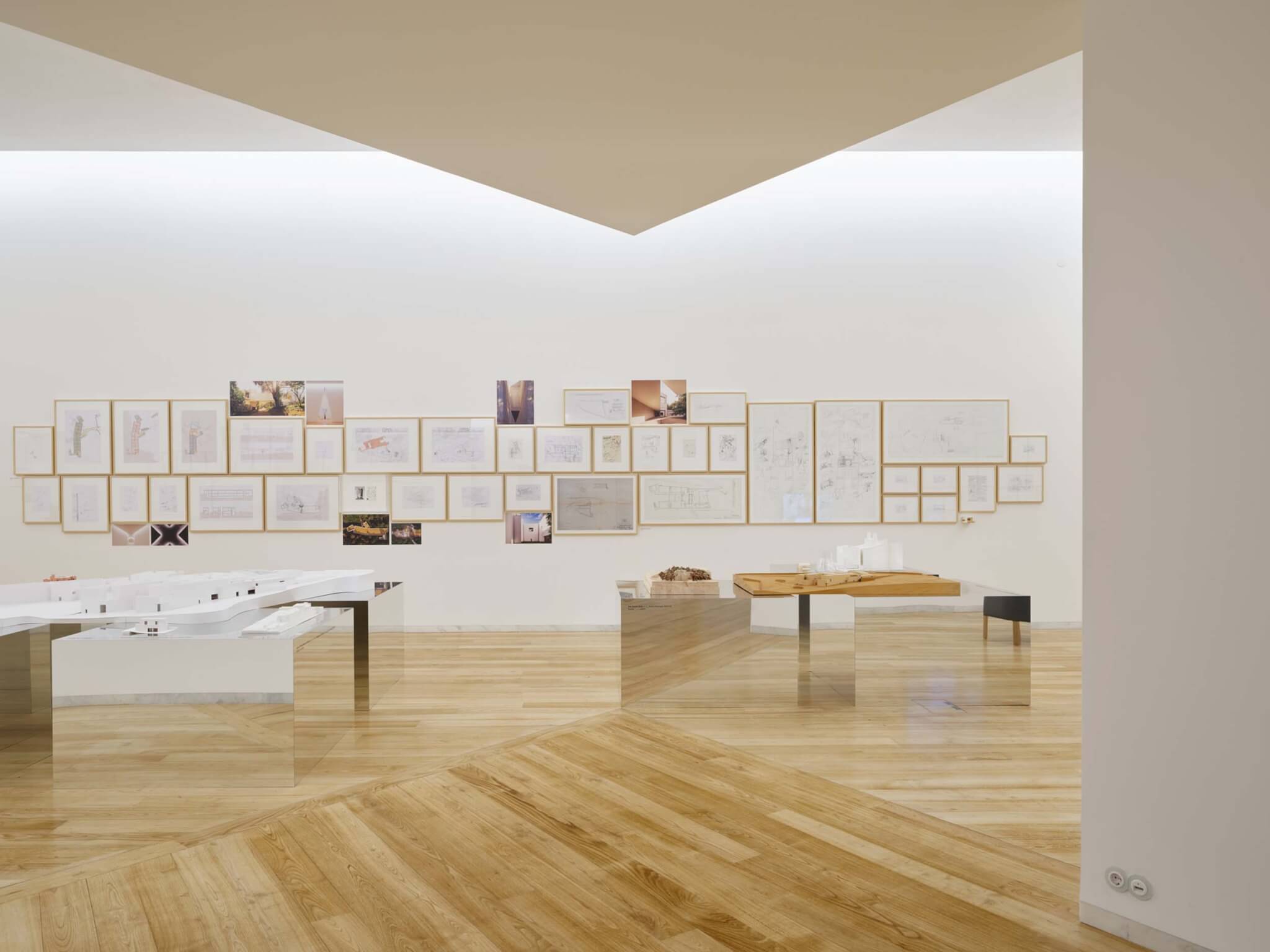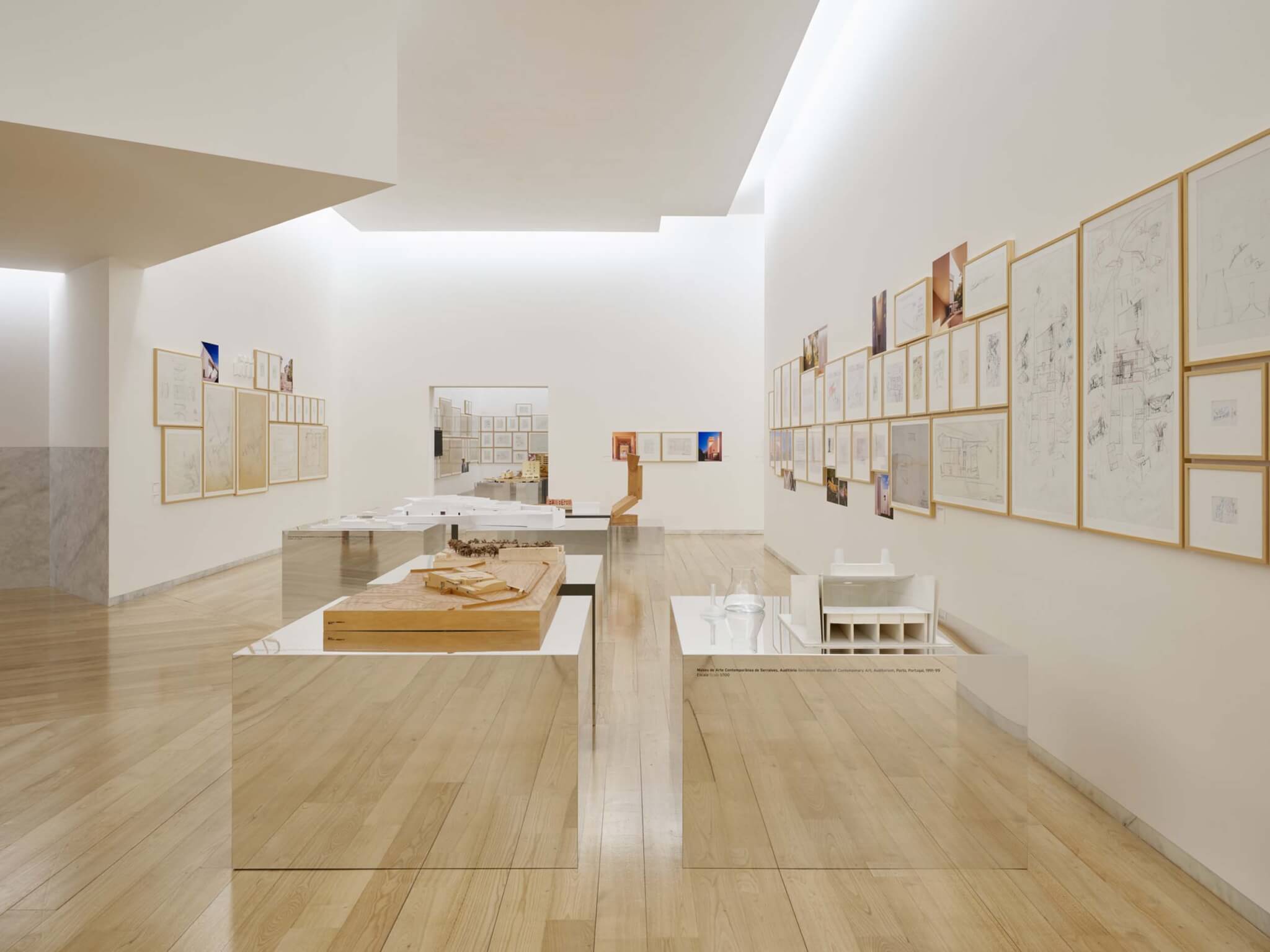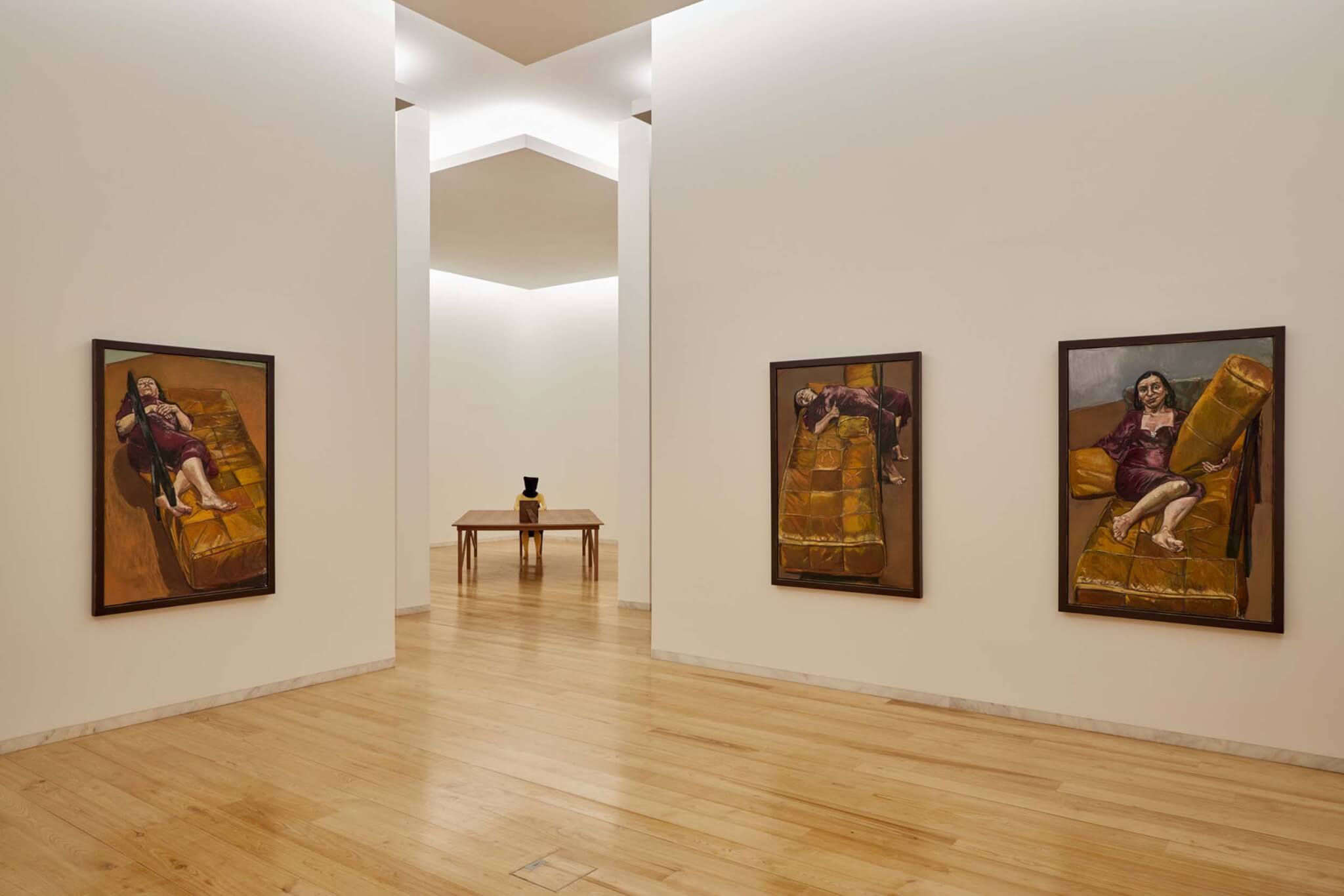C.A.S.A.
Serralves Museum
Porto, Portugal
Through August 2024
“Patriotic rebellion” is what made the Pritzker Prize–winning architect Álvaro Siza’s most recent project possible. His 45,000-square-foot expansion to the Serralves Museum in Porto, Portugal opened to the public on February 26. This new 3-story wing adds more than 21,000 square feet of gallery space to the contemporary art institution Siza originally designed in 1999, as well as approximately 12,000 square feet of art storage. Designed in the same white-washed reinforced concrete with local cork insulation as the original building, visitors may not even notice they’re moving from old to new in the flow of galleries. As in the original, the architecture employs playful window placement to allow sunlight to penetrate without disturbing sensitive artworks. In the lowest level of the expansion, a large portion of the Portuguese nonagenarian’s archive is now held, but that wasn’t always going to be the case.
“The first archive that offered me [space] was the Canadian Centre for Architecture, which, in my opinion, is the best archive in the world,” Siza told AN during a press preview at the museum in late February. “At the time, the Calouste Gulbenkian Foundation [in Lisbon] and the Serralves Foundation were a little surprised that my drawings were going to Canada. I was almost accused of being a ‘traitor to the fatherland.’” To entice him to stay, Siza argued that Portugal needed a contemporary facility that could rise to the technical standards required to preserve his more than seven decades of work—standards the Montreal institution already met. Ten million euros—including four million in EU funds—and 18 months later, he realized such a building himself.

In this new wing, two inaugural exhibitions are currently on display: the first is Improbable Anagrams, a selection of artworks from the Serralves Museum collection curated by director Philippe Vergne. The second is Coleção Álvaro Siza, Arquivo, or C.A.S.A, which showcases Siza’s design process and seminal projects from the last 70 years. Curated by António Choupina, the latter is the largest display to date of Siza’s archival work.
Encompassing 800 architectural drawings, models, sketches, paintings, sculptures, and personal notebooks, C.A.S.A. explores Siza’s oeuvre through nine typologies—the “homes” he has designed for commerce, culture, faith, family, idleness, knowledge, people, studio, and work. The exhibition analyzes projects finished and unfinished, and largely located in Portugal, including the Expo ’98 Portuguese National Pavilion in Lisbon, the College of Architecture at the University of Porto (1979–1997), and the Centro Paroquial church in the architect’s hometown of Matosinhos (1955–1960). The curatorial narrative homes in on the architect’s influence on his country, the story that’s also the nucleus of the museum’s archive.

Today, Siza is one of the world’s foremost architects, but Choupina reminds the viewer that Siza originally wanted to be a sculptor. His gestural designs often focused on creating interior conditions where light surprises and connections to surroundings feel entirely natural. A particularly sweet moment in the show places an early figurative wood sculpture in dialogue with a floorplan for the museum expansion’s building—its angled form reveals the artistic spirit that underlies his architecture.

Though most of the pieces in C.A.S.A. were held in the architect’s personal studio until 2016, several new pieces were donated from the private collections of his sister Teresa Siza and frequent collaborator Carlos Castanheira. They include some of Siza’s earliest paintings—portraits of family members, landscapes, and pastoral scenes of horses—that give an intimate look into his creative origins.

Both C.A.S.A. and Improbable Anagrams are on view for six months. After they close, an entire floor of the museum wing will be dedicated to exhibits on architecture in perpetuity. To Siza, “there are now no better-prepared, better-equipped, and better-qualified places to display the works that are [archived] here.”
Elizabeth Fazzare is a New York–based editor and journalist who covers architecture, design, culture, and travel.











